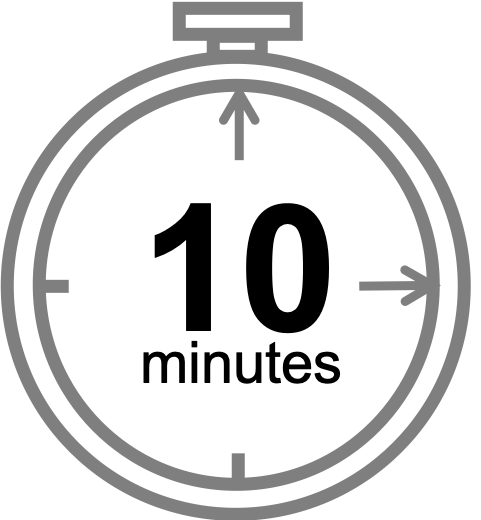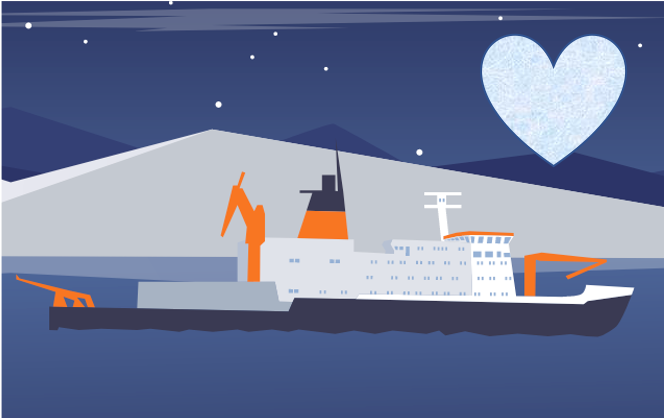A note from the CU Boulder MOSAiC education & outreach team
This week we're taking a break from delving further into the MOSAiC science focus areas to share with you educational resources related to MOSAiC, the Arctic, and polar regions that can be used virtually or remotely. If you have any questions about these resources, are looking for something in particular, or would like us to showcase your educational resources in upcoming MOSAiC Mondays, feel free to email us at mosaic@colorado.edu or fill out a short MOSAiC Monday feedback form.
Stay safe and healthy!
MOSAiC and Polar-Related Online and Remote Learning Resources
1. Videos
Frozen in the Ice: Exploring the Arctic MOSAiC MOOC now on Coursera!
Created by the University of Colorado Boulder in partnership with the Alfred Wegener Institute and with funding from the National Science Foundation, Frozen in the Ice: Exploring the Arctic is a new massive open online course (MOOC) about the MOSAiC expedition. The course features 50 videos from MOSAiC scientists and Arctic experts on topics ranging from the behavior of sea ice, to Arctic clouds, to how climate change is impacting Arctic indigenous peoples. All videos are available for free to everyone, and certificates of completion or graduate credits (coming soon) can be obtained for a small fee.
Watch all of the course videos on YouTube
MOSAiC and Arctic video collection from CU Boulder
What is it like to be a baker on the Polarstern? What changes have we been observing in the Arctic climate system? How do you deploy a buoy in Arctic sea ice? Explore our carefully curated collection of MOSAiC and Arctic-related short videos to learn the answers to these questions and more!
Go to the CU Boulder MOSAiC and Arctic video collection
Exploring by the Seat of your Pants video calls with scientists and explorers
Connect directly with scientists, explorers, photographers, and more around the globe through live video calls! Exploring by the Seat of Your Pants hosts multiple live calls each day that you can tune in to on YouTube. You can even submit questions in real time through the YouTube chat box! Past recorded video chats are also freely available to watch, including ones with MOSAiC scientists, engineers, educators, and videographers. More MOSAiC video calls are scheduled, so keep an eye on the EBTSOYP webpage for what's coming up!
Exploring by the Seat of Your Pants webpage
Exploring by the Seat of Your Pants YouTube channel
National Science Foundation Multimedia Gallery
The National Science Foundation has an awesome collection of videos that will transport you to the Arctic and Antarctica. How might ancient ice help us predict future climate? Is there really a volcano beneath the West Antarctic ice sheet? And why are penguins so darn cute and charismatic?
Go to the NSF Multimedia Gallery



2. At-home learning activities
CU Boulder's MOSAiC and polar-related learning activities
We've put together a collection of educational activities related to MOSAiC, the Arctic, and the Antarctic for a wide variety of grade levels. Many of these activities can be done at home, and in the coming weeks we'll continue to add more. Check back often!
CU Boulder MOSAiC and polar-related activity collection
Featured resource: MOSAiC Math
Science learning at home and outside from the Center for Alaskan Coastal Studies
The Center for Alaskan Coastal Studies has put together an impressive assortment of at-home and outdoors activities for kids of all ages. Bingo games, scavenger hunts, hands-on activities, and arts and crafts - you name it, they've got it. Have some Oreos in your pantry? Learn some geology from them! In a drawing mood? Practice your scientific sketching.
Check out the Center for Alaskan Coastal Studies at-home and outside learning activities
PolarTREC polar education resources
PolarTREC is a wonderful program that provides educators with polar-related educational materials and sends teachers out on polar expeditions, including MOSAiC! Learn about Arctic and Antarctic topics through PolarTREC's online educational resources. Connect directly with scientists in polar regions through the PolarConnect program, or become an active member of the citizen science project PenguinWatch. Check out their website to learn more!
PolarTREC educational resources
National Science Foundation Arctic and Antarctic Learning Resources
Although many of these resources from the National Science Foundation and other organizations were originally designed for classroom use, they can be used as-is or adapted for home use. Check out this extensive list of credible learning resources for a variety of grade levels
Browse the NSF Arctic and Antarctic Learning Resources



3. Interactive and virtual engagements
Submit your artwork to the virtual Museum of MOSAiC Art
Got the creative bug? We want your artwork! Submit photos of your MOSAiC and Arctic-related artwork to the virtual Museum of MOSAiC Art and we'll showcase it in one of our galleries.
Browse the Museum of MOSAiC Art galleries
#askmosaic: Send your questions to MOSAiC scientists and crew!
Have questions about the MOSAiC expedition or the Arctic? Send us your questions, and we'll ask MOSAiC scientists and crew members to answer them!
Submit your #askmosaic questions
Check out submitted questions and answers here
360-degree virtual expeditions
Just because you are at home doesn't mean you can't experience what it's like to be an Arctic explorer. Learn more about the 1893-1896 Fram expedition to the Arctic through an immersive 3D virtual Google Expedition, or take a 360-degree tour of the MOSAiC icebreaker Polarstern, all from the comfort of your couch!
Explore the Arctic Aboard the Fram Google Expedition
Take a 360-degree virtual tour of the Polarstern
Track the Polarstern and Arctic conditions in real time
You can keep track of the Polastern's location in the remote Arctic in real time as well as the meteorologic and oceanographic conditions participants are experiencing and a daily blog from the ship with the MOSAiC web app and the Fluid Earth Viewer. With the Fluid Earth Viewer, you can compare what's going on in the Arctic with your own neck of the woods!
Check out the Fluid Earth Viewer web app
Follow MOSAiC with Reach the World
The MOSAiC education team has partnered with Reach the World to bring you more MOSAiC in your week! Every couple of weeks different MOSAiC team members will be featured on the Reach the World MOSAiC expedition page. Sign up for Reach the World's Explorer Program to learn more and get involved!
Reach the World MOSAiC expedition page
Polar Bear Tracker from Polar Bears International
Polar Bears International is tracking the positions and movements of several polar bears in the Arctic, and now you can track them too! Check out the tracking map to find out where the polars bears are, and read updates on how each of the bears is doing.



 MOSAiC Weekly Tracking
MOSAiC Weekly Tracking
Plot the Polarstern
Each week we will provide you with the latitude and longitude coordinates of the Polarstern so that your students can track its journey across the Arctic in your classroom.
Download the map to plot coordinates
Download a larger map of the Arctic for a bigger picture view of the expedition area
Location of the Polarstern
| Date | Latitude | Longitude |
| September 16, 2019 | 69.68 N | 18.99 E |
| September 23, 2019 | 72.31 N | 26.93 E |
| September 30, 2019 | 85.12 N | 138.05 E |
| October 4, 2019** | 85.08 N | 134.43 E |
| October 7, 2019 | 85.10 N | 133.82 E |
| October 14, 2019 | 84.85 N | 135.03 E |
| October 21, 2019 | 84.97 N | 132.73 E |
| October 28, 2019 | 85.47 N | 127.07 E |
| November 4, 2019 | 85.88 N | 121.70 E |
| November 11, 2019 | 85.82 N | 116.00 E |
| November 18, 2019 | 86.05 N | 122.43 E |
| November 25, 2019 | 85.85 N | 121.35 E |
| December 2, 2019 | 85.97 N | 112.95 E |
| December 9, 2019 | 86.25 N | 121.40 E |
| December 16, 2019 | 86.62 N | 118.12 E |
| December 23, 2019 | 86.63 N | 113.20 E |
| December 30, 2019 | 86.58 N | 117.13 E |
| January 6, 2020 | 87.10 N | 115.10 E |
| January 13, 2020 | 87.35 N | 106.63 E |
| January 20, 2020 | 87.42 N | 97.77 E |
| January 27, 2020 | 87.43 N | 95.82 E |
| February 3, 2020 | 87.42 N | 93.65 E |
| February 10, 2020 | 87.78 N | 91.52 E |
| February 17, 2020 | 88.07 N | 78.52 E |
| February 24, 2020 | 88.58 N | 52.87 E |
| March 2, 2020 | 88.17 N | 31.02 E |
| March 9, 2020 | 87.93 N | 24.20 E |
| March 16, 2020 | 86.87 N | 12.70 E |
| March 23, 2020 | 86.20 N | 15.78 E |
**Day when MOSAiC reached the ice floe that the Polarstern will become frozen in and drift with for the next year.
Log MOSAiC Data
Keep track of Arctic conditions over the course of the expedition:
Download Data Logbook for Sept. 2019 - Dec. 2019
Download Data Logbook for Dec. 2019 - Mar. 2020
| Date | Length of day (hrs) | Air temperature (deg C) at location of Polarstern | Arctic Sea Ice Extent (million km2) |
| September 16, 2019 | 13.25 | High: 10 Low: 4.4 | 3.9 |
| September 23, 2019 | 12.35 | High: 6 Low: -1 | 4.1 |
| September 30, 2019 | 9.1 | -4.7 | 4.4 |
| October 4, 2019** | 6.27 | -13.0 | 4.5 |
| October 7, 2019 | 3.05 | -8.2 | 4.6 |
| October 14, 2019 | 0 | -14.7 | 4.8 |
| October 21, 2019 | 0 | -12.8 | 5.4 |
| October 28, 2019 | 0 | -18.3 | 6.8 |
| November 4, 2019 | 0 | -18.9 | 8.0 |
| November 11, 2019 | 0 | -25.5 | 8.7 |
| November 18, 2019 | 0 | -10.7 | 9.3 |
| November 25, 2019 | 0 | -18.4 | 10.0 |
| December 2, 2019 | 0 | -26.6 | 10.4 |
| December 9, 2019 | 0 | -23.1 | 11.2 |
| December 16, 2019 | 0 | -19.2 | 11.8 |
| December 23, 2019 | 0 | -26.9 | 12.2 |
| December 30, 2019 | 0 | -26.4 | 12.6 |
| January 6, 2020 | 0 | -28.0 | 13.0 |
| January 13, 2020 | 0 | -30.7 | 13.1 |
| January 20, 2020 | 0 | -27.1 | 13.6 |
| January 27, 2020 | 0 | -22.5 | 13.8 |
| February 3, 2020 | 0 | -28.8 | 14.1 |
| February 10, 2020 | 0 | -26.2 | 14.5 |
| February 17, 2020 | 0 | -31.9 | 14.4 |
| February 24, 2020 | 0 | -24.0 | 14.6 |
| March 2, 2020 | 0 | -35.5 | 14.8 |
| March 9, 2020 | 0 | -37.9 | 14.7 |
| March 16, 2020 | 10.5 | -27.5 | 14.7 |
| March 23, 2020 | 16.5 | -28.7 | 14.4 |
*Note: We expect data to fall within the following ranges: Length of day, 0-24 hours; Temperature, -40 to 14 degrees C; Sea ice extent, 3-15 million km2
**Day when MOSAiC reached the ice floe that the Polarstern will become frozen in and drift with for the next year.
Is there something you'd like to see in MOSAiC Monday? Let us know!
Send us your feedback
New to MOSAiC Monday? Check out past editions!
Browse more expedition-related educational resources, videos, and blogs
Email us! mosaic@colorado.edu

